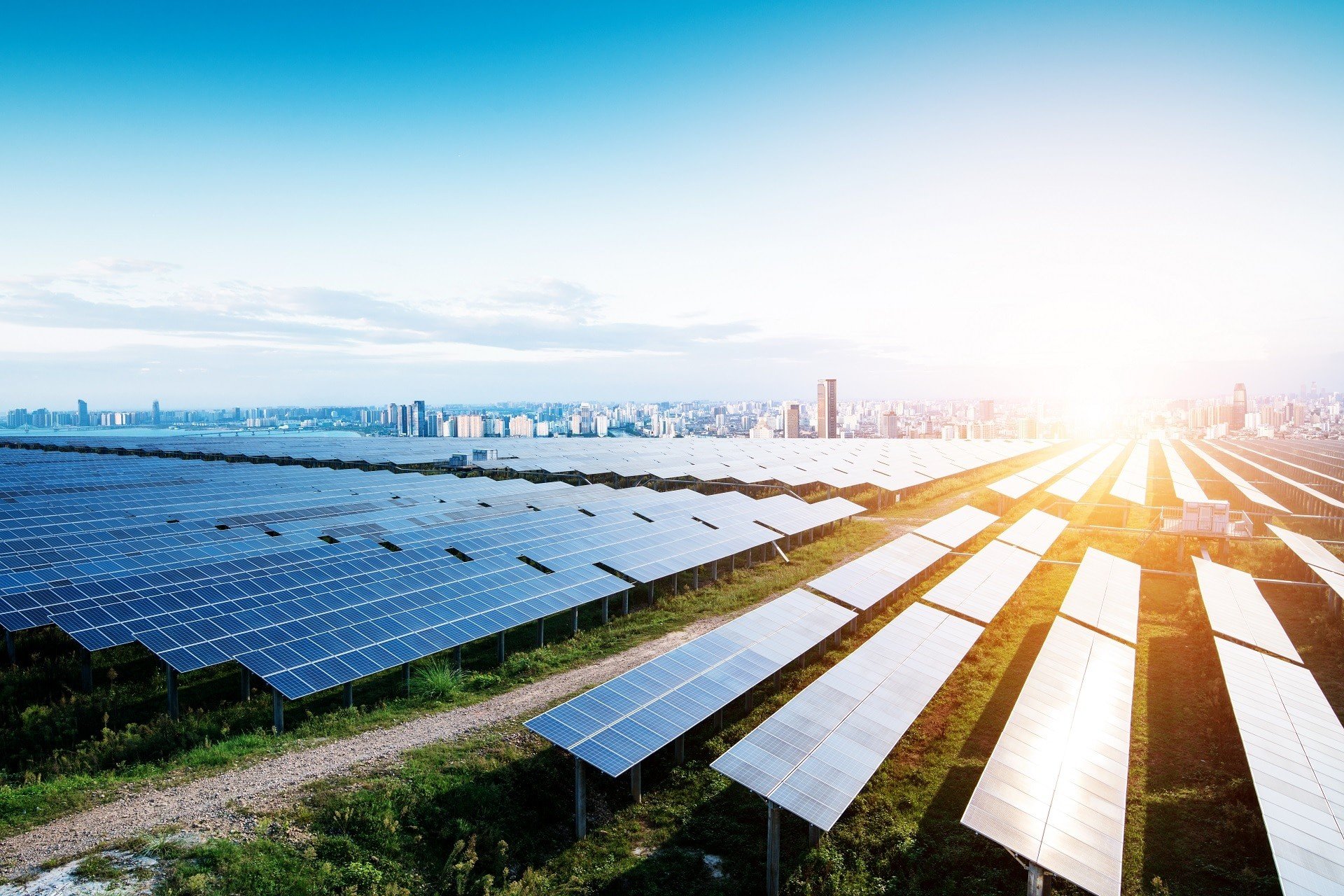-
Posts
2067 -
Joined
-
Last visited
Everything posted by André Mermoud
-
I don't understand well what you mean when you ask PVsyst for generating the 2 other curves from the first one. The efficiency profile definitions should be defined by the user, independently for each voltage. These curves are a property of the inverter, there is no "physical" relation between them. If you define 3 identical curves for 3 different voltages you will get the same results as for one only curve of course. This means that your efficiency is not depending on the input voltage.
-
Please check that the "Power threshold" parameter is not null on the first page, before opening the efficiency page. We have corrected this problem in the next versions.
-
No. For components (*.PAN and *.OND files) you have to ask the provider for checking the option "File compatible with old versions < 6.40" before saving their components. For other files it is not possible.
-
We update the database using the requests of the manufacturers, and publish it with each new issue of PVsyst. We can't of course follow all the new products of all manufacturers. It would be very big task, and we don't want to include data without the acknowledgement of the manufacturer. Therefore pleae ask these manufacturers for taking contact with us at support@pvsyst.com.
-

Irradiation: Horizontal or in-plane?
André Mermoud replied to niloofar.barekati's topic in Meteo data
No, this is quite impossible. There is no model for the retro-transposition to the horizontal plane in monthly values. And no model for the synthetic generation of POA values. Probably nobody knows how to do that. -

How the albedo is added to the POA inclination ?
André Mermoud replied to LoicA's topic in Meteo data
The albedo is computed by the transposition model, in the same way for each model. Please see the description of the Hay model in the Help "Physical models used > Irradiation models > The Hay transposition model" The Albedo component is the irradiance reflected by the ground "seen" by the plane : AlbInc = ρ * GlobHor * (1 - cos i) / 2 where i = tilt angle. With horizontal plane (i=0), the albedo contribution is null of course. For a"normally" tilted plane, for ex. cos(25°) = 0.906, the contribution is 0.046; for a vertical plane, it is 0.5. -
Thank you for the information, we will correct this in the next version.
-

Difference in IAM factor global in different versions
André Mermoud replied to sarika's topic in Problems / Bugs
There was indeed an error when reading the IAM parameters (when defined as a profile) in the version 6.41. This has been corrected in the next versions (since 6.42). -
This is the fraction of "information" taken from satellite data (with respect to ground measurements of nearby stations).
-
As i have already writted in my previous answer, there is no limitation in PVsyst. The limits are in the component's parameters (PV modules and Inverters). In the project's parameter, please read correctly: - IEC (usually 1000V) - UL (usually 600V) This has nothing to do with the simulation, it is an indication of the regulation rules in different countries (UL in the US, IEC for all other countries).
-
You have probably not read the help "Project design > User's needs ("load") > Load profile: ASCII file definition". This is easily available by typing F1 when you are in the concerned dialog. This gives a detailed explanation of the procedure, and mentions a template for the CSV file within the software. You are strongly advised to use it. Your file is not complete: the line for the unit definition, just after the Colunm's titles, is missing.
-
I think that using a 64 bits addressing system is not possible with our developing platform DELPHI. But this has to be confirmed with our IT specialists.
-
PVsyst can simulate PV systems anywhere on the earth. Please see our FAQ Which Meteo Data are available in PVsyst ?
-

IAM factor applied to diffuse and albedo components
André Mermoud replied to SE2015's topic in Simulations
For the calculation of the IAM loss for diffuse, we suppose that the diffuse component is isotropic, i.e. has an equivalent value for any direction of the space. PVsyst performs an integral of the IAM loss for all directions "seen" by the collectors. This IAM factor doesn't depend on the sun position, it is only dependent on the system geometry, and is constant over the year. This factor is applied to the diffuse component at each hourly step of the simulation. The factor on albedo is treated in the same way, as an integral of the IAM for directions at ground level. -
In the inverter's definition, you have a parameter "Minimum voltage for PNom". This means that you will not attain the Pnom value if you don't have a sufficient voltage. This corresponds indeed to an input current limitation (I limit = Pin / Vmin for PNom)
-
The message tells exactly what happens: when you define "Unlimited sheds", the mutual shadings are computed in a generic way. You should not define the 3D shading scene, as the simulation would account for the mutual shadings twice. Please see the help "Project design > Shadings > Near Shadings: Main dialog > Near shadings and sheds".
-
These are indeed the effects of the losses on the albedo and diffuse parts. The albedo is only "seen" by the first row. It is shaded for all other ones behind.
-

Value of Voltage when using Degradation of panel
André Mermoud replied to LoicA's topic in PV Components
The long-term degradation is applied to the STC values for the PV module model (50% in current, 50% in voltage), and therefore slightly affects the operating voltage. However in the case of your table, the Array voltage attains the Inverter VmppMin, and is therefore clipped to this value. This is the array operating voltage, not the MPP voltage. The impact of the degraded voltage in the simulation is simply the possible increase of the loss due to voltage threshold. NB: The degraded module is defined during the simulation process. There is no tool for analyzing this degraded module explicitely. You can create this degraded module by redefining the STC values Isc, Voc, Imp and Vmp. NB: I don't know any publication about the impact of the relative degradation on the current and the voltage. I have put an equivalent decrease for I and V, but without experimental justification. You may have defined night losses in your system, like Auxiliary consumptions or transformer iron loss. -

Invalid Meto file: The clearness index is to high
André Mermoud replied to Larsk's topic in Meteo data
Meteo data for very high latitudes (where the sun is low on horizon, or even not apparent during the day) are sometimes difficult to manage with the usual models. If with the imported Meteonorm data, you have problems like this one you can modify the limits in the "Hidden parameters". In this case: topic "Miscellaneous: Meteo, Simulation, ... ", item "Best KtCC days have strongly high values". -

Definitions of module layout on 3D-shading sensitive areas
André Mermoud replied to omroche's topic in Problems / Bugs
This problem should be corrected in the version 6.46 or 6.47. -
This is a bug that we are investigating. It willl be corrected in the next version 6.48.
-
This depends onthe version you are using. This tool for importing Load profile in hourly data has been completely renewed in the version 6.44. The new file format is completely described in the help, and you have a template in c:\Program Files (x86) \ PVsyst6 \ Data \ UserData \.
-
This warning means that for the efficienciy curves according to 3 voltages, you have specified a voltage outside of the Vmpp window (888 to 1275 V in yoiur case).
-

Incorrect Transposition Model Displayed in Report
André Mermoud replied to Kyle Kattke's topic in Problems / Bugs
This was indeed a bug just in the Version 6.44, when using tracking systems: the simulation reverted to the Hay model even when specifying the Perez model. The simulation was consistent with the report mention. This has been corrected in the next versions

